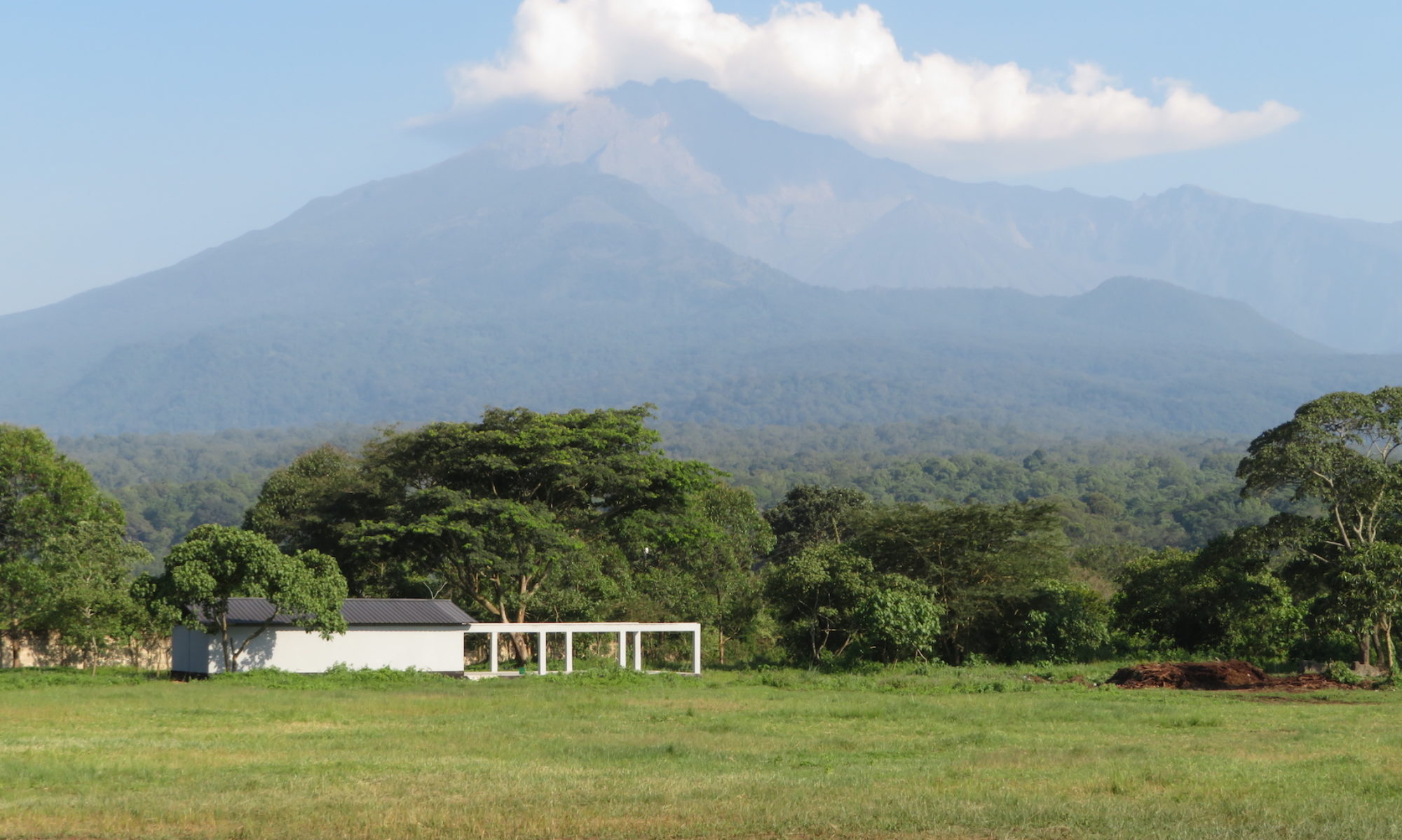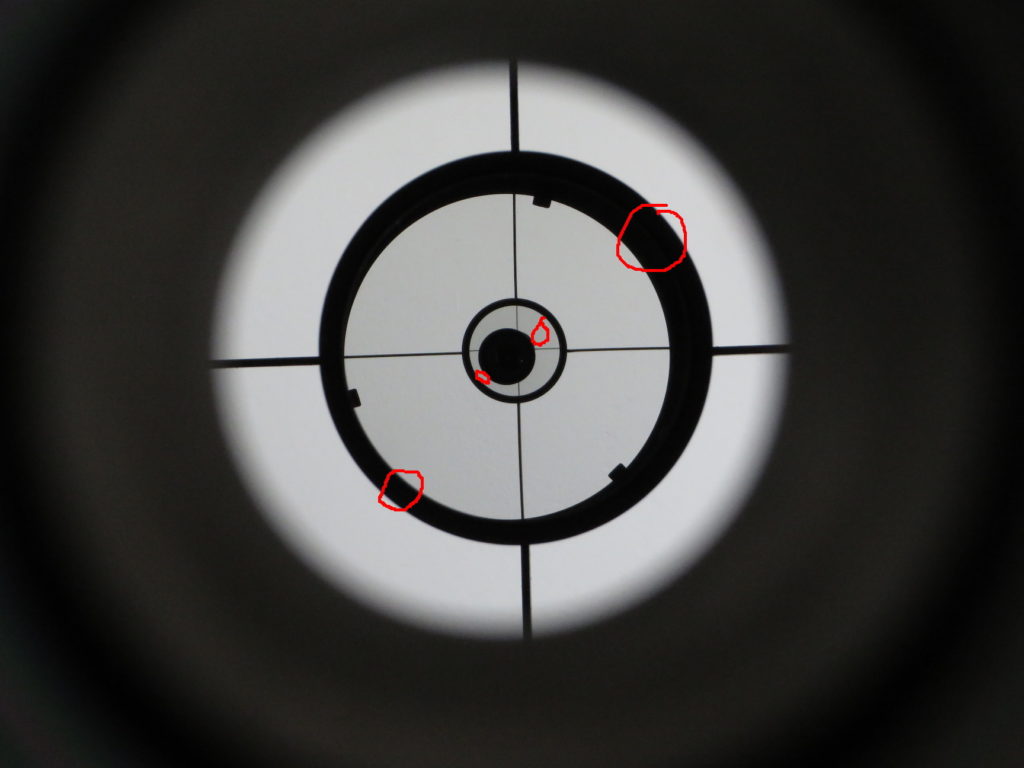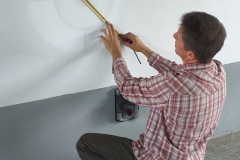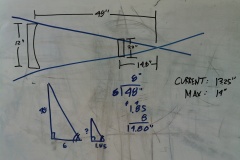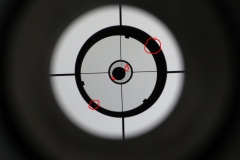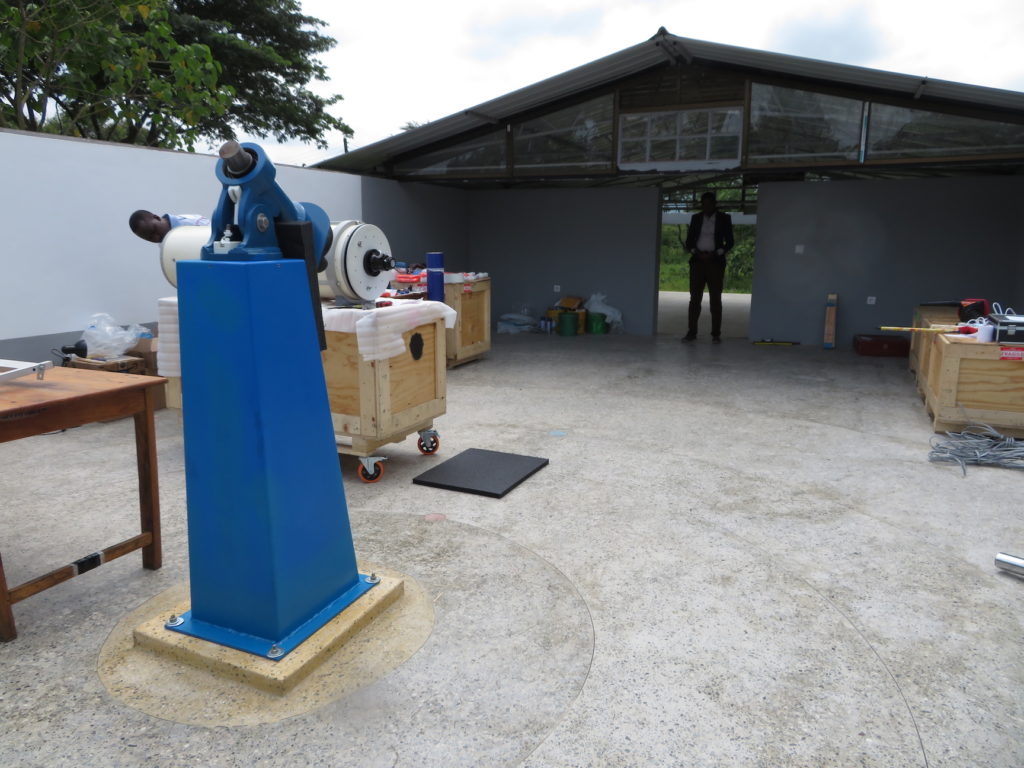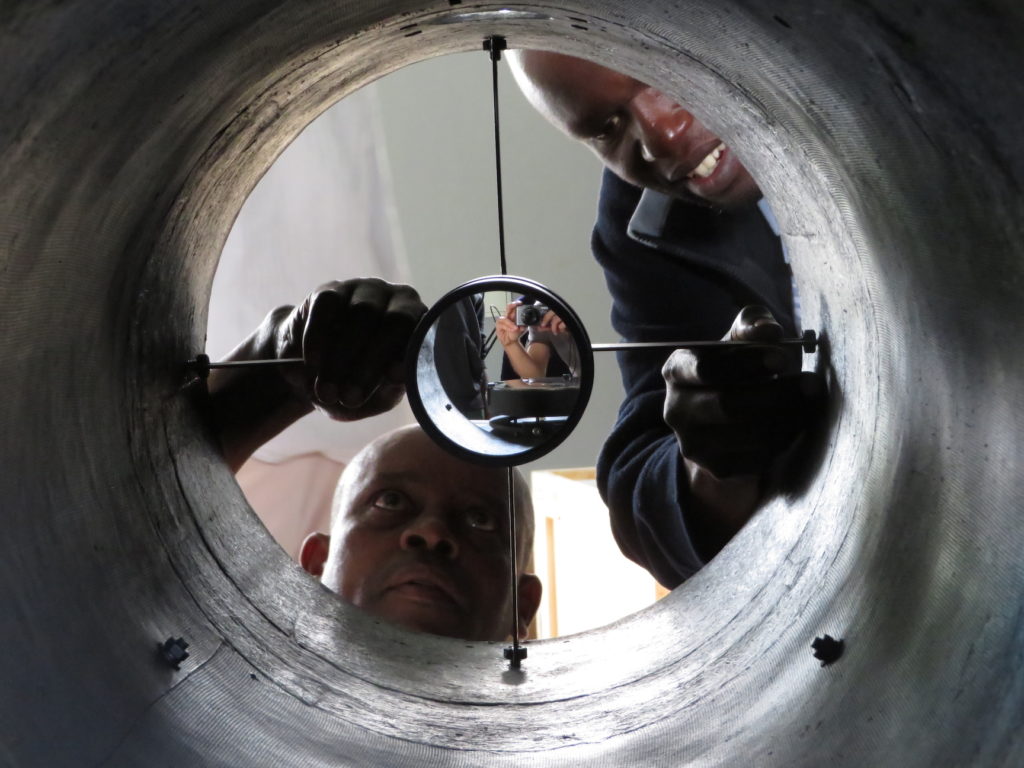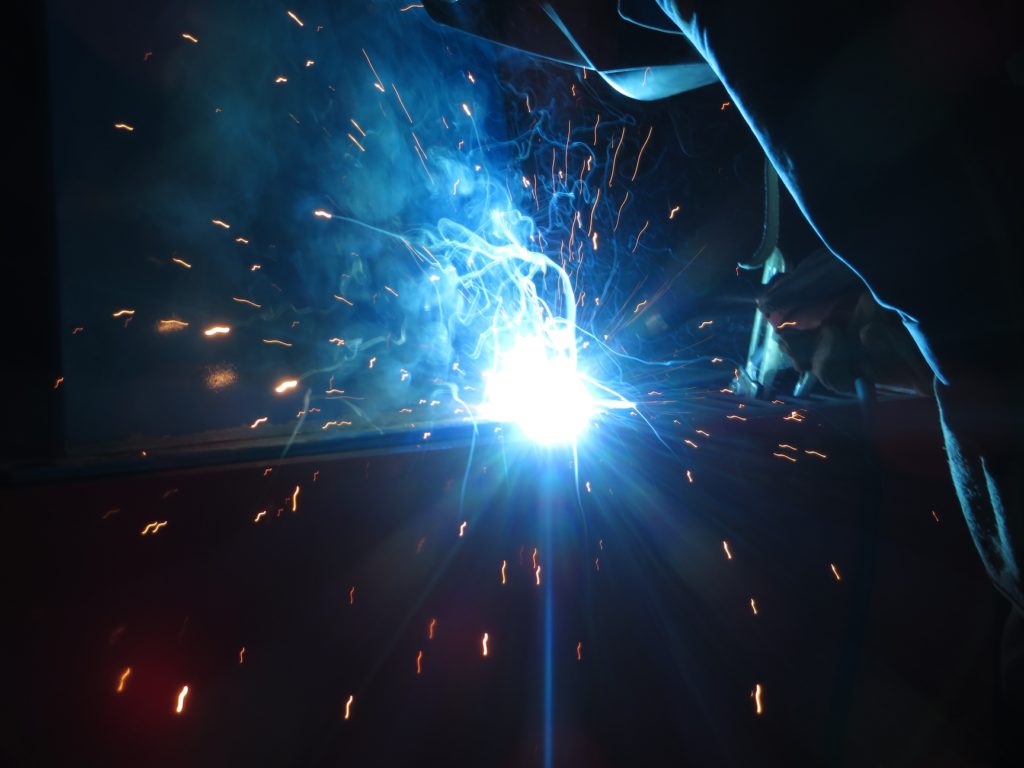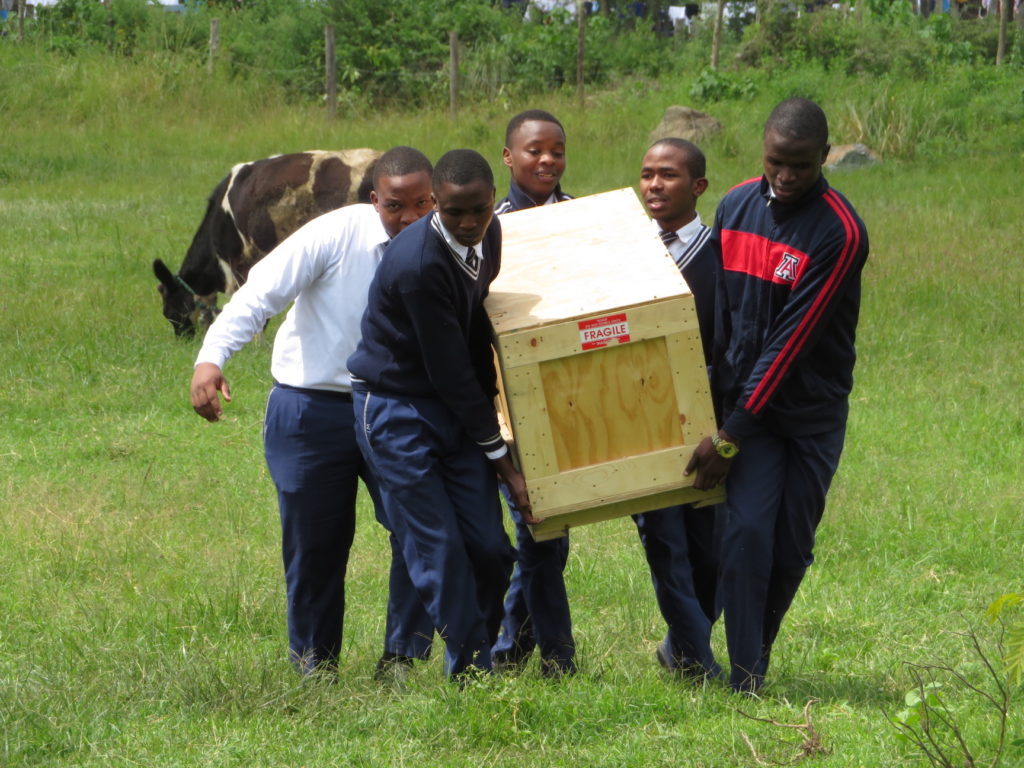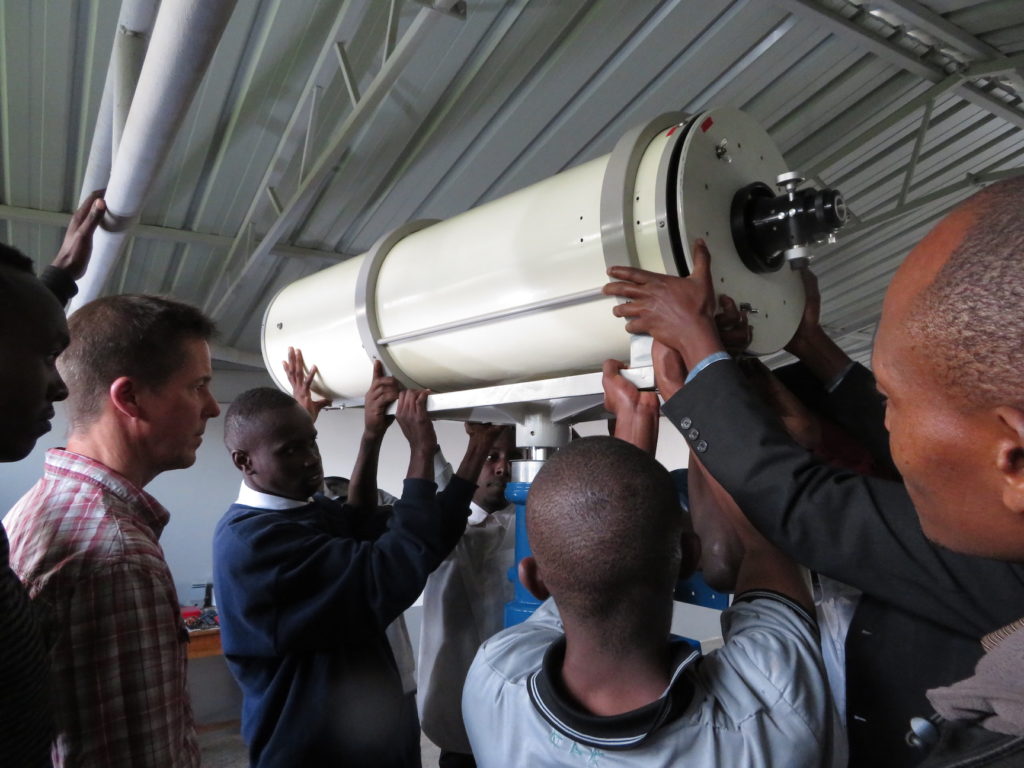
Today saw the installation of the new Orion spotting scope, declination collar and counter weight, and finally, after 12 days, what we hope is the final placement of the tube assembly onto the mount.
The spotting scope gave us some trouble as I had purchased it after the telescope had shipped, so none of the existing mounting holes fit. We had only a hand drill with very sloppy settings, so there was no way that would work. Eliona jumped on his motor cycle and drove to four local repair shops while calling friends and neighbors. He returned in 30 minutes with a “fundi” (worker) with a nice electric drill.
Using the drill bit set and taps I had shipped from the States with the crates, I was able to drill into the solid aluminum ring without penetrating into the fiberglass tube and provide a solid mount for our new guide.
We then attached the dec arm counter weight, which may be the first time it has been in place in 10, 15, or more years. The final challenge was lifting this new, fully assembled and quite heavy arrangement into place. While Eliona and I did so, Pendaeli held the dec arm vertical in case the weights on the right ascension arm were not ample to keep the telescope vertical (which would be very bad).
Once in place, we released our hands one by one, waiting, ready to catch if gravity flipped the telescope on its head. But it remained upright, solid, and so easily moveable.
Tomorrow we balance the entire assembly so that no matter how we oriented the tube, it remains exactly as positioned by hand. Then we attach the motors, power supplies, and hand controller to the car battery.
If all goes well, we’ll be observing Saturday night!
